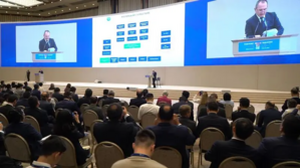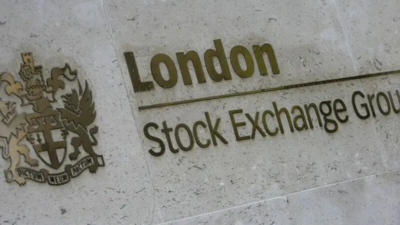When will the Fed begin to cut interest rates? It’s a mystery
A version of this story first appeared in CNN Business’ Before the Bell newsletter. Not a subscriber? You can sign up right here. You can listen to an audio version of the newsletter by clicking the same link.
Nowadays, it’s anyone’s guess when the Federal Reserve will begin to cut interest rates this year — if at all.
Fed officials are meeting this week, starting Tuesday, to discuss rates and set policy. They’re widely expected to hold rates steady for the sixth straight meeting. But analysts are hoping for some much needed clarity on what to the expect from the central bank in the coming months.
That guidance will be key for market observers who clearly have divergent views on interest rates. Forecasts from major Wall Street banks on the first rate cut are all over the place: JPMorgan and Goldman Sachs expect the first cut in July, while Wells Fargo is betting on September. Bank of America doesn’t expect the first cut until December. Some Fed policymakers, meanwhile, have even floated the possibility of a rate hike, instead of a cut.
According to the futures market, Wall Street’s best bet on the first cut is September — and not by a lot. There is currently a roughly 44% chance of the Fed cutting rates in September versus a 42% chance of another pause, the CME FedWatch Tool shows. The odds of an initial cut in November are a bit lower.
“Right now, everybody seems to be just throwing a dart and saying when they think they’re going to start cutting rates,” Liz Ann Sonders, chief Investment strategist at Charles Schwab, told CNN in an interview last week. “There needs to be this analysis on what conditions will occur between now and whenever they start cutting.”
Economic forecasts sometimes miss the mark (at times, by a lot), and Fed economists frequently mention that their projections come with a “high degree of uncertainty,” according to minutes from the Fed meeting in March.
That uncertainty seems to have worsened recently. After inflation rates tumbled throughout 2023, progress stalled in the first quarter of the year, which forced giddy investors who once priced in several rate cuts starting in the spring to re-calibrate their forecasts. That reflects the proverbial “bumpiness” of inflation’s journey back down to the central bank’s 2% target, a point that Fed Chair Jerome Powell often makes.
The string of hotter-than-expected inflation readings was a rude awakening itself, but the latest data on US gross domestic product released last week also raised fears of stagflation, which is an economic phenomenon in which inflation is high but growth deteriorates. It is still way too early to determine whether the US economy is indeed in a period of stagflation since first-quarter GDP will be revised two times in the coming months.
However, it further muddled views of the broader US economy’s health and trajectory. The Fed remains squarely focused on fighting inflation, though, since the job market is currently one of the strongest in history with unemployment still under 4%. The central bank is tasked by Congress to stabilize prices and maximize employment.
“We believe that if inflation continues to remain persistent through May, it is unlikely we will see a rate cut until July or September,” Kathleen Grace, managing member and chief executive of Fiduciary Family Office, said in a note Monday.
The Labor Department releases April data gauging the state of the US labor market on Friday, including monthly payroll growth, wage gains and the unemployment rate.
Manufacturing in Mexico is having its moment. The US is buying in — and so is China
As US supply chains decouple from China, Mexico’s manufacturing sector is emerging as a winner.
Manufacturing in Mexico is attractive for companies that experienced pandemic-era supply chain snarls or want to decrease reliance on trade between the United States and China amid geopolitical uncertainty, reports my colleague John Towfighi.
That’s called “nearshoring,” which is when companies bring production facilities closer to home markets.
As nearshoring continues and global supply chains are reorganized, Mexico’s manufacturing sector has an opportunity for long-term success, according to Alberto Ramos, head of Latin American economics research at Goldman Sachs, who spoke with CNN.
Ramos said Mexico and China have been competing for the US manufacturing market for years, but amid a shifting US-China relationship, Mexico looks poised to pull ahead.
Mexico surpassed China as the top exporter to the United States in 2023. Those exports were driven by manufacturing, which comprises 40% of Mexico’s economy, according to Morgan Stanley.
US imports from Mexico continued to increase in February, according to April 4 trade data released by the Commerce Department. Meanwhile, Chinese exports to the United States were down 20% in 2023 compared to 2022.
Read more here.
Rural, older Americans could get hurt as affordable internet program runs out of cash
For Cindy Westman, the internet is a literal lifeline. She depends on internet access to care for her 12-year-old daughter — who has cerebral palsy and autism — by messaging doctors, accessing test results and scheduling critical medical appointments virtually, report my colleagues Brian Fung and Jason Carroll.
But it’s not easy to stay connected in Westman’s small, rural town of Eureka, Illinois. With a population of 5,100, many of Eureka’s residents struggle to afford food and oil changes, let alone home internet.
“When we’re on the go and she’s hungry, I feed her and then I’ll come home and eat,” said Westman, who is 43. “She doesn’t know any better, because with her developmental disability, all she knows is, ‘(I’m) hungry, and Mom feeds me.’”
Since 2021, struggling Americans like Westman — who gave up a career in information security to care for her child — have made ends meet with the help of a popular federal benefit known as the Affordable Connectivity Program (ACP), which covers home internet service.
For Westman, who gets by on Social Security disability payments, the monthly credits of up to $30 from the government make all the difference, covering her entire internet bill.
Read more here.
Maybe You Like
London Stock Exchange urged to do more to hold onto retail traders
The UK stock market needs to improve investor communication and engagement in order to retain its individual traders, according to a report from online trade and investor provider CMC Markets. ADVERTISEMENTUK retail investors are increasingly...
Hargreaves Lansdown rejects private equity takeover bid
The UK investment platform says the offer from a group including the Abu Dhabi Investment Authority undervalues the firm. ADVERTISEMENTHargreaves Lansdown has rebuffed a takeover proposal worth £4.67 billion (€5.48 billion) made...
Ferrovial set to offload UK regional airports amid Heathrow deal uncertainty
Ferrovial is planning to sell its stake in three UK regional airports amid difficulties in finalising its £2.4bn sale of a 25% stake in Heathrow. ADVERTISEMENTSpanish infrastructure company Ferrovial is reportedly putting up for sale...



























